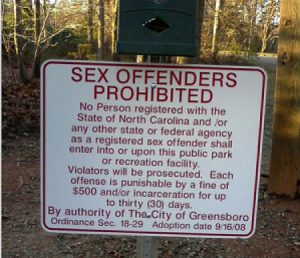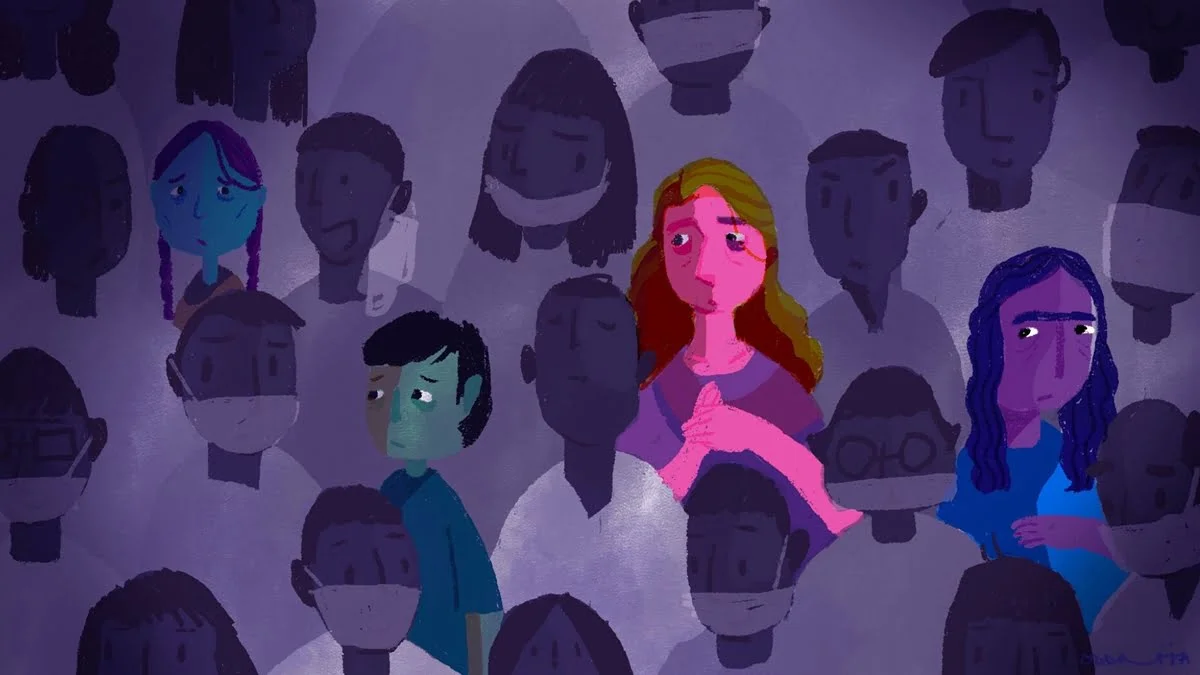On September 20, the government announced that in order to take a step forward towards ‘women safety’ in the country, it has launched the National Database on Sexual Offenders (NDSO). It would include names of offenders convicted under charges of rape, gang rape, child sexual abuse, and eve teasing (harassment) maintaining details of some 4,40,000 people convicted for the above offences. It will be maintained by National Crime Records Bureau (NCRB) and will include names, addresses, photographs, and fingerprint details of convicts and will not be accessible by public. India joins other countries who already have such a database, including Canada, Australia, the United Kingdom, and the United States.

Image source: thenewsminute.com
Why Now?
A question that we must always ask of a decision especially one that is in the nation’s interest is, why now? It is not a matter of coincidence that we are just a couple of months shy from the national elections and this move is a tactical one that will earn the government some brownie points. This is also timely as India was recently named as the most dangerous country in the world for women and this move would probably announce that the government is listening and acting. But can such a move promise women’s safety as is claimed?
Assumptions Vs Reality Check – Is It What They Think It Is?
Recidivism
For one, the basic premise of a sex offenders’ database is that convicted offenders are more likely to commit the same crime again. But NCRB data shows that the percentage of recidivism by convicted offenders was only 6.4% in 2016. The rate of recidivism specifically for sexual offences is unknown because the NCRB does not have appropriate data as per response to the RTI filed by Amnesty International India. Amidst such lack of data and research around crimes of sexual violence, the government has put this registry that is bound to be an ineffective list.
Vague Definitions
Secondly, the registry categorises offenders posing low, moderate, or high danger. This seems to be a fuzzy categorisation that could facilitate misuse. ‘Low danger’ offenders include people charged with ‘Technical Rape’, which may also include consensual sex which is blind to the idea of consent. Offenders posing ‘moderate danger’ would stay on the registry for 25 years and this includes people charged under sections 67 and 67A of the Information Technology Act, which criminalises ‘obscene’ material.
Now, remember the case of S Thirumurugan? A 19-year-old youth from Srivilliputhur was arrested in October last year for allegedly making abusive comments about PM Narendra Modi in a private Facebook conversation. Thirumurugan was sent to jail. Time to close your FB accounts? Well, may be! Because the current regime is infamous to curtail political sentiments and digital freedoms.
Effect On People Who Would Want to Report Against Sexual Violence
Thirdly, one of the major assumptions is that victims/survivors of sexual violence want to report such violence and anonymous reporting through the cyber crime portal will make that possible. According to 2016 government data, out of 38,947 cases of reported rapes in India, the accused was known to the victim in almost 95 percent of the cases. In nearly 4,000 cases, the accused was a close family member. Such a registry offers little protection from such offenders. In fact, the fear of the offender being included in the registry may exacerbate the problem of underreporting.
The fear of the offender being included in the registry may exacerbate the problem of underreporting.
Sexual Violence is an Individual’s Territory
Thirdly, the belief that you can find ‘bad’ people, isolate/shame them, and keep everyone else safe, is a driving force behind criminal justice. But is sexual violence so much a psychologised phenomena as it is presented to be? Are custodial rapes, honour killing, and military rapes really about the offender himself? The focus instead needs to be shifted to tackling barriers to reporting, training law enforcement officials, and providing support to survivors rather than this ill-conceived registry.
Why This Registry Is Problematic

Image source: blogspot.com
As its precedent United States, the not so unimaginable next move would be to make this registry public. Even until it doesn’t go public, we always have the possibility of data breach. A data breach or even rumours (one of our fastest news source!) of possible inclusion in the registry is especially dangerous at a time when vigilante violence is on the rise. Dozens of people have been killed across India over rumours of kidnapping children in the past six months, while several have been attacked for inter-religious or inter-caste consensual relationships.
In the United States and UK too, there have been several instances of vigilante violence against possible sex offenders listed in public registries. We also know that Aadhaar will be linked to this registry (as if we had not had enough of the Aadhaar debate). Data breaches within the Aadhaar system are not uncommon, with reports of agents selling access to data for Rs. 500. Hence, this registry can have disastrous consequences on the lives of convicted and of those rumoured to be.
The registry can become a tool to further marginalise and criminalise minorities- religious or ideological. It has been launched in a time when recently in the garb of UAPA Act, 5 activists were detained for allegedly inciting caste based violence. Now, in order for public vigilantism to rise, or surveillance and harassment by the police on the basis of ‘believed offence’ along to prevail coupled with an absence of any intention in amending related laws, this database becomes a perfect justification for injustice to arise and perpetuate.
A data breach in the registry is especially dangerous at a time when vigilante violence is on the rise.
A stated point by the government is that the registry will help conduct background checks, police verification of prospective employees, tenants, and many more. This also implies that the state can impose restrictions on where such offenders can live. They may become homeless or be compelled to live in areas far from home where they may face less scrutiny. The stigma and ostracisation that such offenders will face will invariably extend to their families.
Studies in the US have shown that a combination of social ostracisation, lack of psychiatric support and the inability to find a job or housing, can even increase chances of recidivism – thus, defeating the very purpose of the registry. Sex offender registration could be slow death by humiliation.
Will The Ministry Answer These Questions

Image Source: NCBR Government
1. The database is only for those convicted for sexual offences 2005 onwards. What about people convicted before 2005?
2. What about the 85% of cases of sexual violence against women, which excludes cases of marital rape and assault, go unreported. Does such a registry address this problem?
3. Does the registry impact the present and future living conditions of the person (and family) on the registry?
4. Will RTI apply to this data? Could I access details as a provision of RTI? If yes, we know what a massive intrusion in the fundamental rights of the convicted can that be. If not, under what clause will RTI be modified?
The stigma and ostracisation that such offenders will face will invariably extend to their families.
Parting Thoughts
Studies by Human Rights Watch and the American Civil Liberties Union show that sex offender registries in the US have done more harm than good. Instead of crime prevention, they lead to harassment, ostracism, and violence against former offenders, especially children, and impede their rehabilitation. We need to be conscious about these too. We also need to realise that high profile rape cases are covered by the ‘breaking news’ wave of the media and these shape public perception of sex offenders.
However, a massive number of of cases are unreported and the criminal justice system is under-staffed and under-resourced to deal with them. Diverting resources to the ‘visible effort’ of sex offender registry implies less allocation for other necessary and ‘not making to the news’ measures that are aimed at prevention of the crime, removing conditions of non-reporting, training on laws and at large, targeting patriarchal structures in our society.
Featured Image Source: One Lucian News





Well written opinion and true. Registries are at best placebos and worse, state sponsored violence against people who have served their sentences. No thoughtful person is for them.
Offender’s database is the best option to beware from these treats.